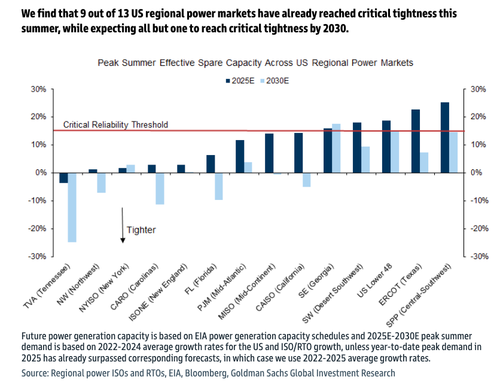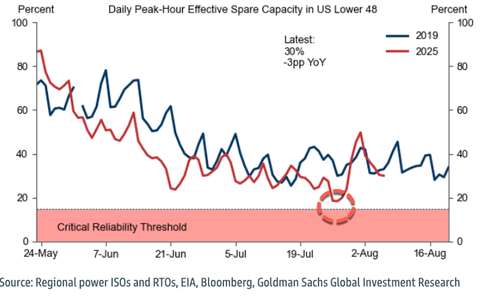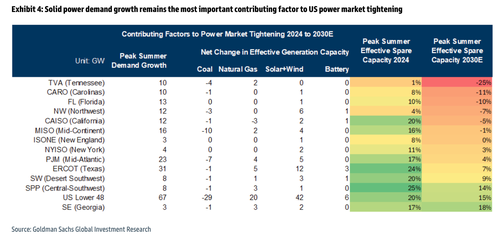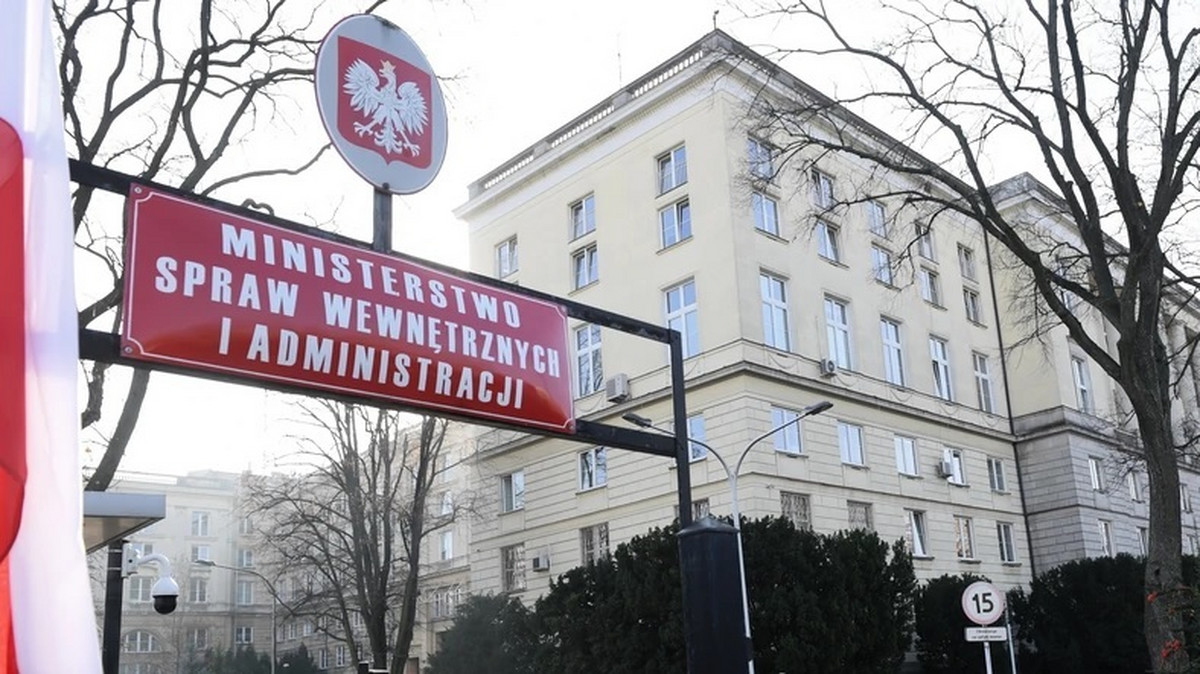
„Price-Spikes & Blackouts”: America’s Power Crisis Is Just Getting Started
The epicenter of America’s power crisis appears to be on the PJM Interconnection grid, with the Mid-Atlantic area at ground zero. Power bills in the Baltimore area are skyrocketing, driven mostly by disastrous green policies that have shuttered reliable, low-cost fossil fuel power generation plants in favor of unreliable solar and wind energy, allegedly to address a climate crisis. Now demand is surging, whether from AI data centers, EVs, or other electrification trends, which means there’s a massive mismatch in power supply versus power demand.
Goldman analysts led by Hongcen Wei have been tracking the power crisis and warned in a note on Wednesday that power market tightening has expanded from the three grids they covered last month (read here) to all regional markets.
„We find that 9 out of 13 US regional power markets have already reached critical tightness this summer, while expecting all but one to reach critical tightness by 2030,” Wei wrote in the note to clients.
The analyst continued, „For the rest of this summer, we highlight power reliability risks in PJM (Mid-Atlantic), MISO (Mid-Continent), the Northeast (New York and New England) and the Southeast (Florida and Tennessee), given both critical tightness and forecasted August heatwaves.”
He warned: „Critical tightness could lead to power price spikes and blackouts with significant social and economic losses.”
As of mid-August, 9 of the 13 U.S. regional power grids have already reached dangerously low spare capacity levels that are at or below the critical reliability threshold. This raises blackout threats and results in power price spikes during high-demand usage hours.

On the subject of critical reliability issues, it took just one substation failure earlier this week in Baltimore to put more than a million Baltimore Gas and Electric customers on notice for potential hours-long blackouts. The issue was resolved within hours, but it underscores how fragile the local grid has become after years of epic mismanagement by the state’s Democratic leadership under the guise of going 'green’…
Delegate Robin Grammer of Baltimore County…
It’s an unbelievable disgrace what the Democrats have done to the people of this state. https://t.co/ogqeCHafQQ
— Robin Grammer (@RobinGrammer) August 11, 2025
Goldman’s Wei warned clients: „Most US regional markets remaining critically tight through 2030.”
„Since we published on the US peak summer power market tightening, solid power demand growth further fueled by heatwaves has significantly tightened multiple regional markets, especially PJM (Mid-Atlantic), where power demand and prices have reached record-highs,” the analyst said.
Wei outlined three contributing factors to power market tightening:
-
Solid power demand growth, which remains the most important factor impacting all regional markets,
-
Insufficient renewable and natural gas power build-up to offset scheduled coal retirements,
-
and Power storage and other newer technologies remaining too limited to fill the gap.
What a mess.

Green energy policies purged grids of stable coal power generation.

Back to the epicenter of the power crisis. Marylanders are not thrilled about the power bill hyperinflation.

And the power bill crisis is tanking the ratings of the far-left Maryland Governor Wes Moore and the Democratic Party in Annapolis.

Folks are mad. This will only worsen.

Like Goldman, our view is that the power bill crisis cycle is just in the early innings. Just wait until this winter in the Mid-Atlantic.
And just like that, the rush to „go green” to save the planet from a manufactured crisis – merely a marketing and PR ploy by Democrats for fundraising – has led to mismanaged grids nationwide, now dangerously teetering on the verge of becoming third-world, like Cuba, with constant rolling blackout threats.
Somewhat good news: President Trump has been proactive, issuing an order to delay the retirement of coal-fired power plants and boosting investments in nuclear power.
Timestamp.
In one year, this will be the most popular chart on this site pic.twitter.com/h93gWXMoNL
— zerohedge (@zerohedge) August 11, 2025
For those hoping nuclear will save the day.
Hey @grok how long does it take to build a new nuclear power plant https://t.co/iX4l8J6WiR
— zerohedge (@zerohedge) August 11, 2025
Well, it’s a 2030 story.
Tyler Durden
Wed, 08/13/2025 – 18:00

















